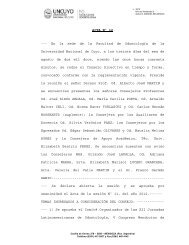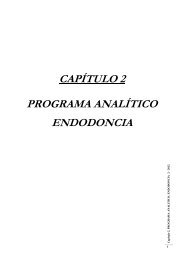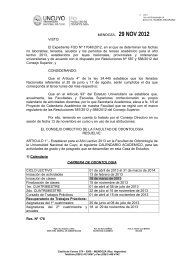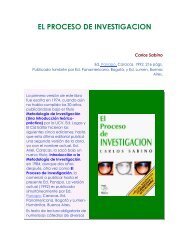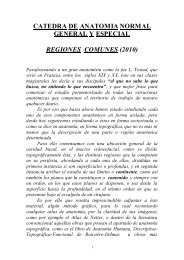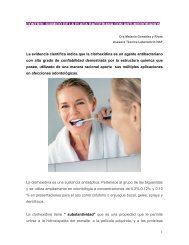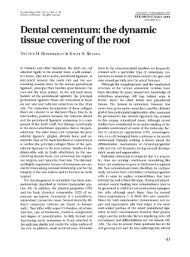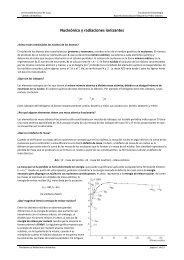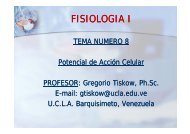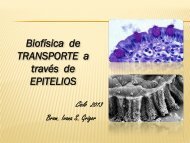A Review of Dental Suturing for Optimal Soft-Tissue Management
A Review of Dental Suturing for Optimal Soft-Tissue Management
A Review of Dental Suturing for Optimal Soft-Tissue Management
- No tags were found...
Create successful ePaper yourself
Turn your PDF publications into a flip-book with our unique Google optimized e-Paper software.
CE 1Table—Principles <strong>of</strong> <strong>Suturing</strong>General GuidelinesSutures are usually placed distal to the last tooth and in each interproximal space.Sutures should always be inserted through the more mobile tissue flap first.A circular <strong>for</strong>m <strong>of</strong> needle is used because <strong>of</strong> the restricted space in the mouth.Suture needles should be grasped only by needle holders and the suture needle should be inserted and pulled through the issuein line with the circ l e .Grab the suture needle in the center with the needle holder.The needle shoulder should be placed a few mm from the tip <strong>of</strong> the needle holder.Do not grab the needle at the junction <strong>of</strong> the needle and suture swaged.When penetrating through tissues, the needle should enter at right angles to the tissue.The goal during suturing multiple tissue levels is to suture periosteum to periosteum and tissue to tissue.Pull the suture just tight enough to secure the flap in place without restricting the flap’s blood supply.The flaps should not be blanched when tying a suture.Sutures should be placed no closer than 2 mm to 3 mm from the edge <strong>of</strong> the flap to prevent tearing through the flap duringpostoperative swelling.Suture MaterialsSuture ThreadThe desired qualities <strong>of</strong> a suture threadinclude the tensile strength that is appropriate<strong>for</strong> its respective use, tissue biocompatibility,ease <strong>of</strong> tying, and that it allows minimal knotslippage. It is important that the clinicianselect the specific suture thread and diameterbased on the thickness <strong>of</strong> the tissues to besutured and whether there is the presence orabsence <strong>of</strong> tension-free mobile tissues. 4There<strong>for</strong>e, it seems to this author that suturetechnique and material selection should bebased on a knowledge <strong>of</strong> the desired goals <strong>of</strong>the respective surgical procedures and thephysical and biologic characteristics <strong>of</strong> thesuture thread in relationship to the intraoral invivo healing process.The practitioner has an armamentarium <strong>of</strong>suture materials from which to select <strong>for</strong> useboth intra- and extraorally. Adequate strength<strong>of</strong> the suture material will prevent suture breakage,and proper suture knots <strong>for</strong> the materialused will prevent untimely untying or knot slippage.The clinician also must understand thenature <strong>of</strong> the suture material, the biologicprocesses <strong>of</strong> healing, the biologic <strong>for</strong>ces in thehealing wound, and the interaction <strong>of</strong> thesuture and tissues. This is vital because thepractitioner must ensure that a suture willretain its strength until the tissues <strong>of</strong> the surgicalflaps regain sufficient strength to keep thewound edges together. In those circumstancesin which the intraoral tissues most likely willnever regain their preoperative strength, or thesurgical flaps are not tension-free, the clinicianshould consider using a suture material thatretains long-term strength <strong>for</strong> up to 14 days andresorbs in 21 to 28 days, such as conventionalpolyglycolic acid (PGA) sutures. 2 , 4C o n v e r s e l y, if a suture is to be placed in atissue that heals rapidly (eg, intraoral tissue),the clinician should select a resorbable suturethat will lose its tensile strength at about thesame rate that the tissue gains strength. Thesuture also will be absorbed by the tissue so thatno <strong>for</strong>eign material remains in the wound oncethe tissue has healed, such as the surgical gut orthe new, rapidly resorbable PGA suture material(PGA-FA ) a . 1Two mechanisms <strong>of</strong> absorption result in thedegradation <strong>of</strong> absorbable sutures. First, sutures<strong>of</strong> biological origin, such as surgical gut (eg,plain and chromic gut), are gradually digestedby intraoral enzymes. 2 This suture material ismade from an animal protein and potentiallycan induce an antigenic reaction. When usedi n t r a o r a l l y, this material loses most <strong>of</strong> its tensilestrength in 24 to 48 hours, unless it is coatedwith a chromic compound that extends absorptionup to 7 to 10 days and extends loss <strong>of</strong> tensilestrength <strong>for</strong> up to 5 days. 5Second, surgical gut sutures may break toorapidly to maintain flap apposition, particularlyif used in patients with a very low intraoral pH.A decrease in intraoral pH may be caused by aplethora <strong>of</strong> physiological events, such as meta-aHu-Friedy Mfg Co, Chicago, IL 60618; (800) 483-7433164 Compendium / March 2005 Vol. 26, No. 3



